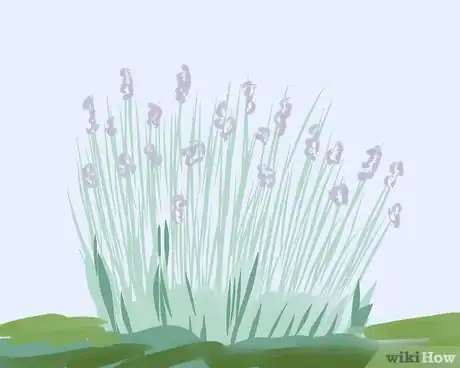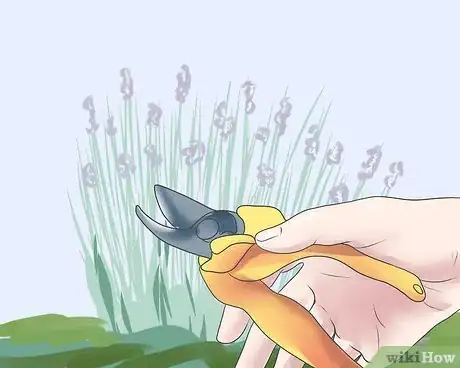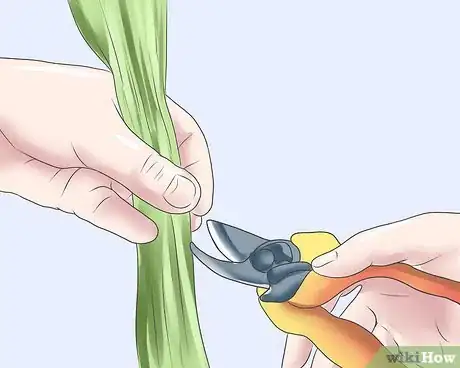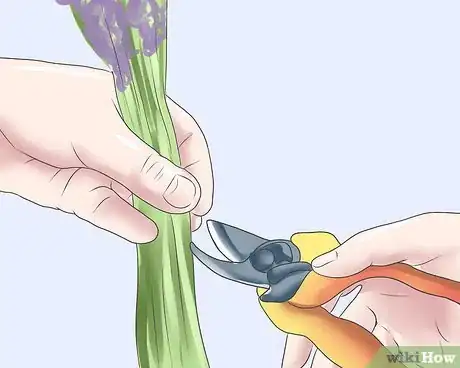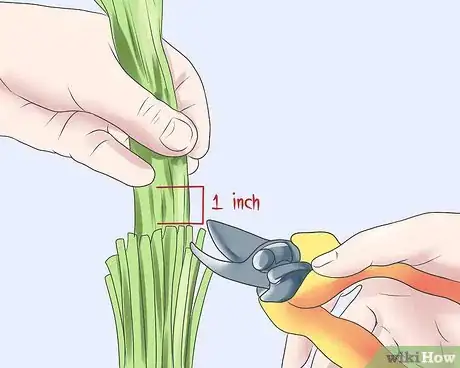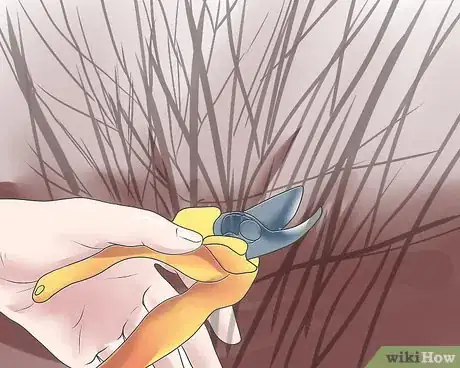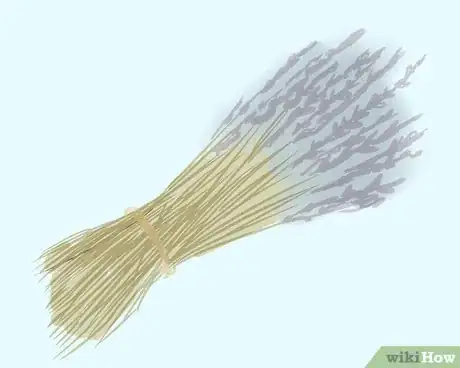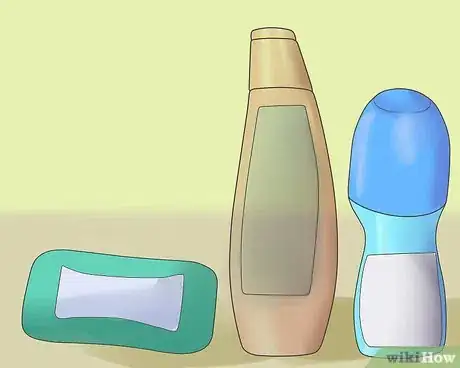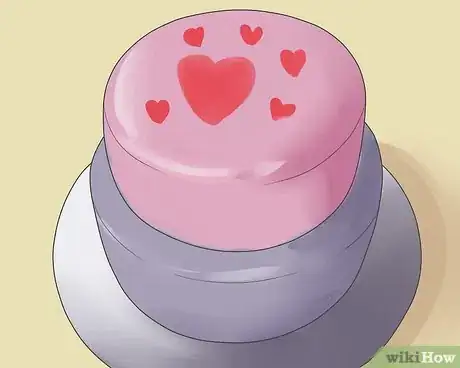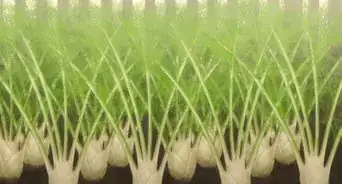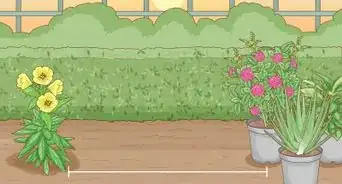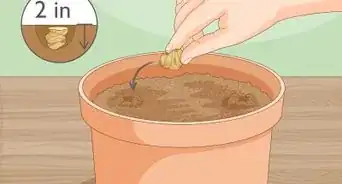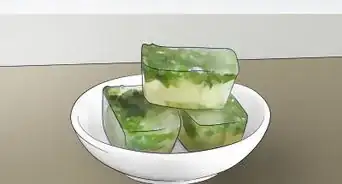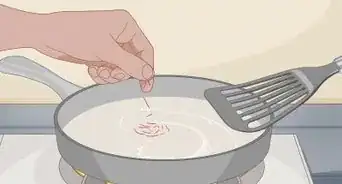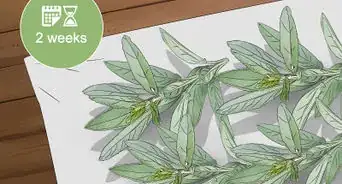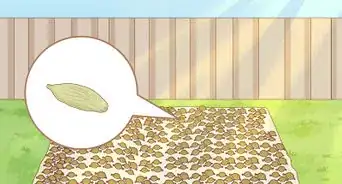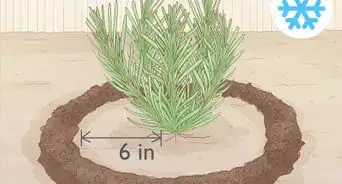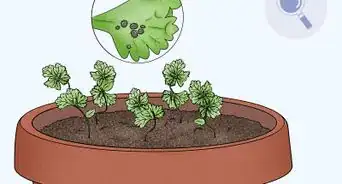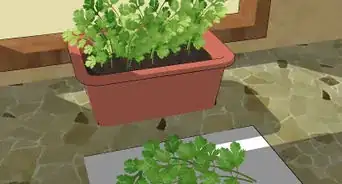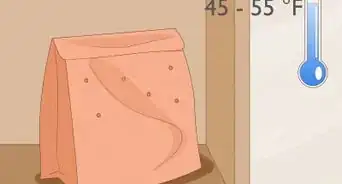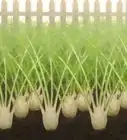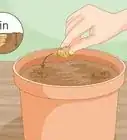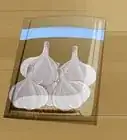This article was co-authored by Katie Gohmann. Katherine Gohmann is a Professional Gardener in Texas. She has been a home gardener and professional gardener since 2008.
wikiHow marks an article as reader-approved once it receives enough positive feedback. This article received 13 testimonials and 100% of readers who voted found it helpful, earning it our reader-approved status.
This article has been viewed 199,414 times.
Lavender is an herb in the mint family that produces small purple flowers and thick, aromatic foliage. Lavender grows best in sunny areas in rocky soil and forms into shrubs that come back each year. They grow thicker with each passing season and can become woody with thick, heavy branches. When trimmed properly, lavender shrubs respond by producing loads of fragrant flowers, several times each season.
Steps
Trimming During the Growing Season
-
1Wait until the second year to trim a lavender shrub. Lavender takes a few years to get fully established. The first year you plant it, it may only produce a few stalks of flowers. In subsequent years, it will produce an ever-larger bush of flowers. The first time you trim lavender, during its second year of growth, you may only get a handful of stalks. By year 3 or 4, you should have 5 - 8 bunches of lavender you can use to dry and use or display.
-
2Trim lavender right when the flowers open. Lavender is at its most fragrant right when the flower buds open. This should happen in late spring or early summer. Trim lavender in the afternoon, when the essential oils are strongest.[1]
- You can wait a few weeks after the flower buds open to enjoy them in your garden, but by the time you trim them, the oils won't be as strong. If you're using the lavender to make essential oil, it's better to trim them early.
Advertisement -
3Use a very clean set of pruning shears. Use a hand pruner or shears that have been washed clean of dirt and disinfected in a bleach solution. Taking this precaution will help ensure that the plant doesn't pick up a bacterial disease. You should also make sure the shears are very sharp so that they make a clean cut that will heal over quickly.
- Avoid using craft scissors to trim lavender. They don't make a clean enough cut.
- Bypass pruners are your best option. These are spring-loaded with two curved blades.
-
4Gather the stalks and trim the shrub back by a third. Use one hand to gather together enough stalks to make a fistful, then trim the stems with the shears. Trim them back so that 1/3 of the length of the stems is left on the shrub.[2]
- If your shrub is on the older side, you'll likely have to cut more than one bunch.
- Don't cut into the woody part of the shrub. Make sure to leave all of the wood intact, since cutting it could injure the plant.
-
5Trim again when the second flush of flowers opens. Later in the summer, the shrub will produce another flush of flowers. You can trim these the same way you trimmed the first flush, cutting the stalks by the fistful.
Pruning in Preparation for Winter
-
1Prune to an inch above the wood. In the fall, after the second flush has come and gone, prune the stems down to an inch above the wood. Leaving them long will create space for snow to collect on the shrub and break it, or wind to blow off weaker branches. Pruning the shrub to prep for winter will make it much more likely to survive the harsh weather.
- Taking the time to do this will also help to prevent more of the shrub from turning to wood. The parts of the plant that turn to wood won't produce new lavender stalks; the stalks grow from new shoots that emerge from the shrub every year. A big, woody base is prone to cracking or rotting, so the idea is to keep it from getting too woody.
-
2Don't take away the wood itself. Even though you don't want the base to get too woody, you can't cut away old wood on a lavender shrub. Some shrubs rejuvenate themselves when you cut back the wood, but lavender doesn't. What you cut won't grow back. Make sure you never cut the part of the shrub that has turned to wood.[3]
-
3Trim away dead or damaged parts in spring. If you live in a place with heavy snows and harsh weather, your lavender bush is likely to lose a few branches over the winter. Examine the shrub in early spring, before it begins producing new shoots. Remove any broken or rotting branches to make way for new growth.
Drying and Using Lavender
-
1Dry the lavender. After you've trimmed lavender, you can display it in a vase or dry it for further use. To dry lavender, you have three choices: you can tie it into bunches and hang it up, lay it out in the sun and let it dry over the course of a few days, or use a food dehydrator.
- To hang your lavender to dry, use a rubber band to tie the stems together. Hang the lavender bunch upside-down in a cool, dry spot. Allow it to dry for a week or two. Drying lavender this way preserves its color and scent.
- To dry your lavender in the sun, lay it flat on a screen, and set the screen in a sunny spot. The lavender will dry over the course of 5 days or so. Lavender dried in the sun tends to fade to a lighter color.
-
2Use lavender in craft projects. Lavender's relaxing yet stimulating scent makes it a popular ingredient in lotions, soaps, and deodorants of all kinds. Remove the dried buds from the lavender stalks and use them to create essential oil, sprinkle them into homemade soap, or mix them with rose petals and other dried flowers to create potpourri.
-
3Cook and bake with lavender. Lavender is an edible herb that tastes delicious in both sweet and savory dishes. Flavor yellow cake with a teaspoon of ground lavender, or add lavender buds to the pot when you're making roast beef. Lavender also makes an excellent herbal tea.
Expert Q&A
Did you know you can get premium answers for this article?
Unlock premium answers by supporting wikiHow
-
QuestionHow can I keep my lavandula stoechas (lavender) blooming all summer?
 Katie GohmannKatherine Gohmann is a Professional Gardener in Texas. She has been a home gardener and professional gardener since 2008.
Katie GohmannKatherine Gohmann is a Professional Gardener in Texas. She has been a home gardener and professional gardener since 2008.
Professional Gardener
-
QuestionDo you cut back lavender in the spring?
 wikiHow Staff EditorThis answer was written by one of our trained team of researchers who validated it for accuracy and comprehensiveness.
wikiHow Staff EditorThis answer was written by one of our trained team of researchers who validated it for accuracy and comprehensiveness.
Staff Answer wikiHow Staff EditorStaff AnswerWait until the plant is in its second year of growth before cutting back your lavender plant. The best time to prune back lavender is after it has bloomed, most often in spring or early fall. However, it does depend on the variety. For example, L. stoechus cultivars need pruning in summer, right after the first flowers; this will protect the plant from winter snowfall. The amount of pruning also varies depending on variety, as some lavenders need lighter pruning than others. Do some research for the variety of lavender you need to prune to be sure you know when the best time is.
wikiHow Staff EditorStaff AnswerWait until the plant is in its second year of growth before cutting back your lavender plant. The best time to prune back lavender is after it has bloomed, most often in spring or early fall. However, it does depend on the variety. For example, L. stoechus cultivars need pruning in summer, right after the first flowers; this will protect the plant from winter snowfall. The amount of pruning also varies depending on variety, as some lavenders need lighter pruning than others. Do some research for the variety of lavender you need to prune to be sure you know when the best time is. -
QuestionIs it possible to transplant lavender?
 wikiHow Staff EditorThis answer was written by one of our trained team of researchers who validated it for accuracy and comprehensiveness.
wikiHow Staff EditorThis answer was written by one of our trained team of researchers who validated it for accuracy and comprehensiveness.
Staff Answer wikiHow Staff EditorStaff AnswerYes, lavender can be transplanted. However, don’t expect it to flower for the first summer after you’ve transplanted it, as it needs time to settle into its new location. Before transplanting, make sure the plant has been well watered and trimmed to remove any old flowers. If the roots are damaged, cut off these parts before replanting.
wikiHow Staff EditorStaff AnswerYes, lavender can be transplanted. However, don’t expect it to flower for the first summer after you’ve transplanted it, as it needs time to settle into its new location. Before transplanting, make sure the plant has been well watered and trimmed to remove any old flowers. If the roots are damaged, cut off these parts before replanting.
Warnings
- Do not trim young lavender bushes. They need at least 2 years to become well established before trimming is necessary.⧼thumbs_response⧽
- Never trim lavender with dull pruning shears. This could cause branches to have rough ends, and make the lavender bushes appear misshapen and unattractive.⧼thumbs_response⧽
- Do not trim lavender branches back too far. Leave some green on the stems, otherwise it will take a long time to reproduce and your trimmed lavender bushes will look uneven. Cutting lavender back too far can also result in fewer blooms.⧼thumbs_response⧽
Things You'll Need
- Lavender bushes
- Pruning shears
- Rubbing alcohol or bleach
References
- ↑ http://www.gardeningknowhow.com/edible/herbs/lavender/pruning-lavender.htm
- ↑ http://www.whiteflowerfarm.com/growing-lavender-care.html
- ↑ http://www.whiteflowerfarm.com/growing-lavender-care.html
- http://www.gardeningknowhow.com/herb/pruning-lavender.htm
- http://everything-lavender.com/lavender-care.html
About This Article
To trim lavender, try to trim it right when the first flowers open, which is when lavender is at its most fragrant. Also, make sure you use pruning shears that have been disinfected in bleach to ensure the plant doesn’t pick up any bacterial diseases. When you’re ready to trim your lavender, gather together a fistful of stalks, then trim the stems with the shears. Just make sure to avoid cutting into the woody part of the shrub, since that could cause injury to the plant. For more advice from our Horticultural co-author, including how to prune your lavender in preparation for winter, keep reading!
